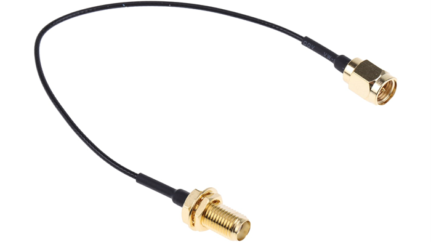-
ROSSLARE EUROPORT TARGETS HEALTH & SAFETY WITH CAMERA TELEMATICS PARTNERSHIP - 2 days ago
-
Landmark Study Reveals Wearable Robotics Significantly Boost Safety and Efficiency in Industrial Environments - July 24, 2024
-
Visku Tackle The Retail Seasonality Challenge One Pallet At A Time - July 22, 2024
-
KAMMAC AND BERGEN LOGISTICS STRENGTHEN FASHION & LIFESTYLE SERVICES IN THE UK - July 19, 2024
-
TENTBOX EXTENDS PARTNERSHIP WITH ARROWXL TO SUPPORT INCREASING DEMAND - July 17, 2024
-
The Perfume Shop improves customer journeys while driving profitability in partnership with Scurri - July 17, 2024
-
ZEROMISSION SECURES £2.3M ($3M) INVESTMENT TO ACCELERATE ELECTRIC FLEETS - July 16, 2024
-
BCMPA CELEBRATES SUCCESS OF 2024 CONFERENCE - July 15, 2024
-
Best of the Best: Jungheinrich Celebrates Triple International Award Win - July 12, 2024
-
GOPLASTICPALLETS.COM CALLS ON NEW CHANCELLOR RACHEL REEVES TO CONSIDER PLASTIC PACKAGING TAX REFORM - July 10, 2024
Cabling makes the world go round. For decades now, coaxial cables have been an important part of life. Depending on the application, coaxial cables can provide a much more stable presence than other cabling types.
Though we think of them when we think of cable television, coaxial cables have much greater use than we realize. There are some key benefits of using coaxial cables, including the ones laid out below.
Easy Installation
When you purchase a TV coaxial cable from RS, you don’t have to worry about some complicated installation. That’s because coaxial cables are very easy to install for any applicable connection. Coax can typically be installed by hand, though sometimes a hand tool or two may be required.
There is only one conductor that you need to deal with. For the most part, those conductors are large enough that you can easily see and handle them. Compared to something like fiber, which requires precise alignment and fusion splicing equipment, coaxial cables can be installed in a matter of seconds. When it comes to cabling, don’t overlook the convenience that an easy installation can provide to the process.
Supports Higher Bandwidth
As the needs of consumers continue to grow, there also comes a need for greater bandwidth. That is where coaxial cables can come in handy. Coax can provide support up to 10 Gbps downstream and up to 1 Gbps upstream. It can also operate over frequencies ranging between 1.8 and 3.0 GHz. That alone opens the door for a higher bandwidth capability.
Fiber has potentially unlimited bandwidth, but it is also a major hassle to install. Tapping bandwidth on fiber is also a lot more difficult (and expensive) than most people realize. Fiber also has to contend with things like optical beat interference, whereas coax is completely free of it.
Provides Power
Just about any electronic device you come across requires some sort of power in order to operate it. One of the underrated benefits of using coaxial cables is that they can provide power. That’s because coaxial cables are metallic and can transfer electrical current. Fiber cables aren’t conductive so they can’t transfer power at all.
If you have a network powered modem, using a coaxial cable can help to keep internet phone service running during a power outage or fire because they can transfer power. Those aren’t necessarily situations that arise often, but they can be an invaluable thing to have in the event of an emergency.
Coax is Tough
For cabling, it is critical that there is some ability to hold up against wear and tear. Some are better than others, but coaxial cables are very good at holding up against regular damaging factors. Accidents and bad things can happen all the time. Thankfully, coax has a better resistance capability because they are thicker and tougher to crush, bend, or cut through.
For fiber connections, those thin connections are very easily broken. To combat that, fiber often requires a lot of strength gels, armoring, sheathing, yarns, and members to keep them from getting damaged easily. Coax is constructed to hold up in virtually any environment.
Easier to Find
From time to time, cable that has been buried behind a wall or underground will need to be located and removed. Since coax cable is metallic, a tone generator can be used to both locate and shield that cable. Compared to fiber, which is non-conductive, it is a lot easier to find in comparison. Being able to find that cabling quickly and easily means avoiding accidental damage and potentially expensive digging that would have been required otherwise.

































